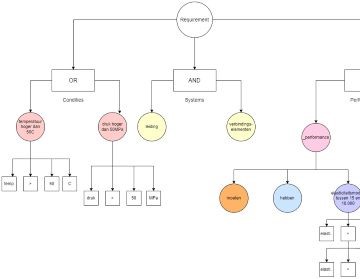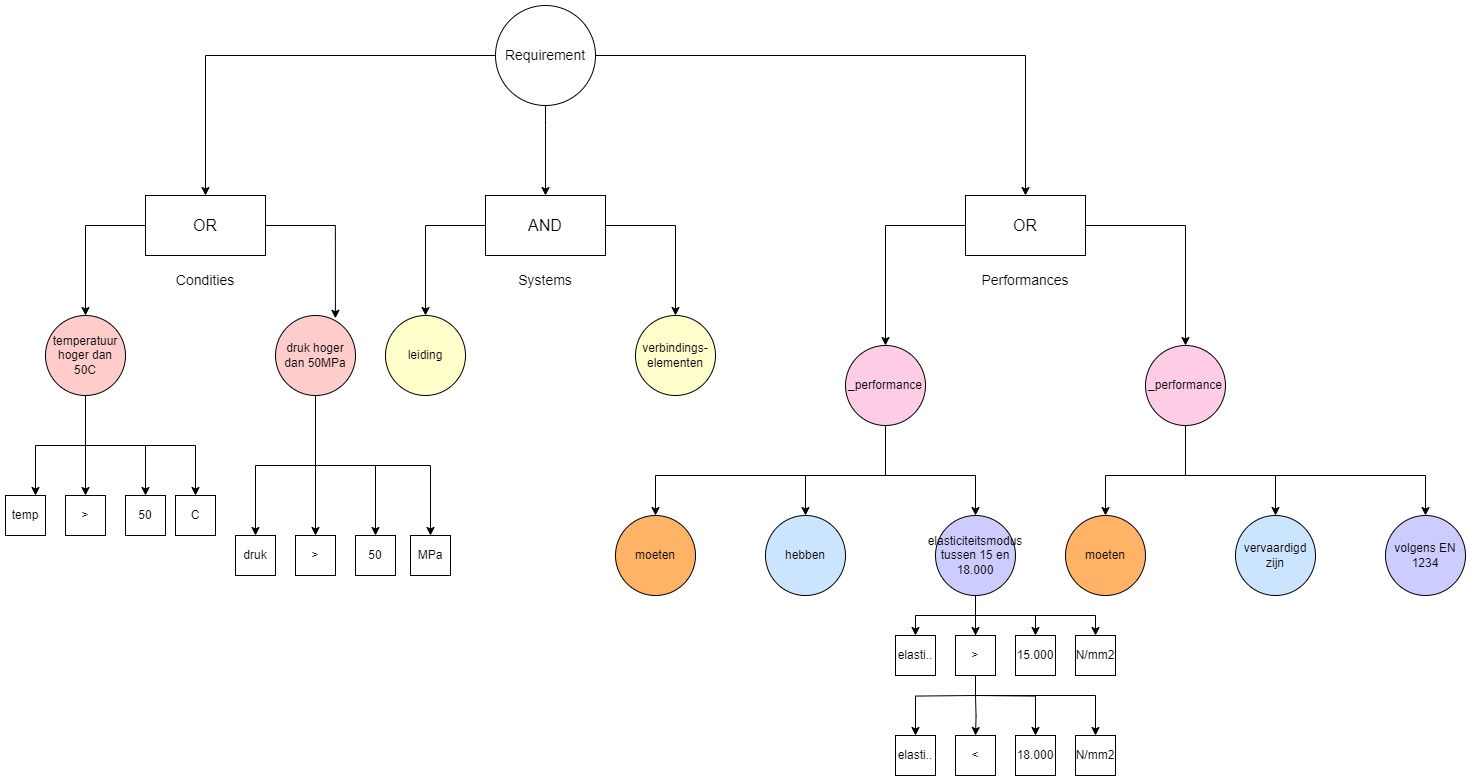
Transforming Requirements into a Knowledge Graph
In today’s digital world, data that is Findable, Accessible, Interoperable, and Reusable (FAIR) can save organizations a significant amount of time and resources. In collaboration with LIACS, CROW, and Ketenstandaard, we developed a method to transform textual requirements written in Dutch or English into a knowledge graph. This makes them machine-readable and easier to share across different platforms and allows for better visualization and understanding of these requirements.
Example: “Als de temperatuur hoger is dan 50 C en de druk is hoger dan 50 MPa dan moeten de leiding en verbindingselementen een elasticiteitsmodulus hebben tussen 15.000 en 18.000 N/mm^2 of vervaardigd zijn volgens EN 1234”

Benefits of FAIR rquirements in the Built Environment
Our project aims to help organizations in the built environment by significantly reducing the time spent searching for and managing requirements. In sectors like construction and installation, this can save thousands of hours annually. Additionally, making requirements FAIR reduces compliance risks, as requirements become individually traceable and shareable without the need for constant duplication.
Digital collaboration
This initiative was shortlisted for the DigiDare Award 2024. You can read more about this here. It wouldn’t have been possible without the collaboration with our partners. Are you ready to transform your digital collaboration in the built environment? Discover the benefits of FAIR specifications and requirements today!
